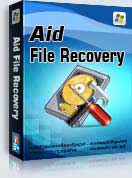Will Win 10 64-bit Recognize No-OS HD Formatted Under Win 7 32-bit in Windows 10/Windows 7/Windows 8/Windows 8.1/Windows XP PC, best format recovery software help you recover MS word,excel, pictures, music, video files from Will Win 10 64-bit Recognize No-OS HD Formatted Under Win 7 32-bit
Use "unformat" to recover formatted drive for " Will Win 10 64-bit Recognize No-OS HD Formatted Under Win 7 32-bit " after quick format,full format,accidentally formatted,reformatting,High-level formatting,Low-level formatting.
Use "recover partition" to recover files - Will Win 10 64-bit Recognize No-OS HD Formatted Under Win 7 32-bit partition,lost partition,changed ,damaged partition.And if the size or position of partition is changed by format,It can not recover with "unformat"so you can use "recover partition"mode.
Use "undelete" to recover deleted files - Will Win 10 64-bit Recognize No-OS HD Formatted Under Win 7 32-bit after Virus attack,Recycle bin clear,disk cleanup,Press shift del by mistake,permanently empty recycle bin,shift delete ,accidentally deleted by a mistake.
Use "Full Scan" to recover data - Will Win 10 64-bit Recognize No-OS HD Formatted Under Win 7 32-bit which can not be found with "undelete" and "unformat" and "recover partition",after showing an error,display as raw file system,unformatted,unknown partition,unpartitioned,needs to be formatted,or the file system is not exfat,not fat32,not ntfs.
"Will Win 10 64-bit Recognize No-OS HD Formatted Under Win 7 32-bit", I'm currently running Win XP SP3 32-bit. I have two hard drives, an older Western Digital 250 GB Caviar SATA II drive and a more recent Western Digital 1TB Caviar SATA III drive. My system is now currently running exclusively on the 1TB drive. Not long ago I cloned it from the older 250 GB drive to gain space. This means I have an unattached/dormant 250 GB drive that still has Win XP 32-bit OS on it, along with a great deal of other data that's all preserved on my 1 TB drive. I'm preparing to upgrade to Win 7 64-bit and have bought many new components for the new build — including a new Mushkin 120 GB solid state drive — and the old Caviar hard drives will be integrated into this as well. So, I want to do the following (unless either I can't or there's a better, easier way): 1. Erase and reformat my 250 GB Caviar drive. 2. Install the now reformatted 250 GB Caviar drive as a slave drive in my current Win XP 32-bit system. 3. Copy all files I want to preserve for my Win 7 build to the 250 GB Caviar drive from my current 1 TB Caviar drive. 4. Now erase and reformat the 1 TB Caviar drive. 5. Build the Win 7 system, loading the Win 7 OS on to my new Mushkin 120 GB solid state drive. 6. Add both the reformatted 1 TB Caviar drive (w/no data) and the 250 GB Caviar drive with my "old" data that I'm transferring over to my Win 7 system on it. In addition to old files I want to keep, the 250 GB Caviar drive will have drivers and other data useful in setting up my Win 7 system on it. Is this simple or is there an issue with using a hard drive formatted under Win XP 32-bit on a Win 7 64-bit system? (I'll also note that I bought the full version of Win 7, which has both 32-bit and 64-bit versions of the OS on it, though I definitely want to ultimately run 64-bit.)
Formatting a disk for use by an operating system and its applications typically involves three different processes.High-level formatting is the process of setting up an empty file system on a disk partition or logical volume and, for PCs, installing a boot sector. This is a fast operation, and is sometimes referred to as quick formatting. Reformatting often carries the implication that the operating system and all other software will be reinstalled after the format is complete. Rather than fixing an installation suffering from malfunction or security compromise, it may be necessary to simply reformat everything and start from scratch. Various colloquialisms exist for this process, such as "wipe and reload", "nuke and pave", "reimage", etc. Sometimes, data present in the physical drives (Internal/External Hard disk, Pen Drive, etc.) gets lost, deleted and formatted due to circumstances like virus attack, accidental deletion or accidental use of SHIFT+DELETE. In these cases, data recovery software are used to recover/restore the data files. Logical recovery of files, partition, MBR and filesystem structures After the drive has been cloned to a new drive, it is suitable to attempt the retrieval of lost data. If the drive has failed logically, there are a number of reasons for that.Data damage can be caused when, for example, a file is written to a sector on the drive that has been damaged. This is the most common cause in a failing drive, meaning that data needs to be reconstructed to become readable. Corrupted documents can be recovered by several software methods or by manually reconstructing the document using a hex editor.
Aidfile Recovery Software Keyfeature
support FAT32 EXFAT NTFS and RAW file system
support Win32 (32 bits) and Win64 (64 bits)
Support Windows XP, Windows 8, Windows 8.1,Windows Vista, Windows 2003, 2008, 2012,Windows 10,Windows 7 .
Desktop & laptops Ultrabook:HP Pavilion,HP Compa,Alienware Alpha,Lenovo ThinkCentre,Lenovo IdeaCentre,Dell Inspiron,Dell XPS,Sony VAIO,Acer Aspire,Asus Transformer,Dell Latitude,Samsung Ativ Book,Asus VivoBook,HP Envy,Lenovo IBM ThinkPad,Lenovo IdeaPad Yoga,Microsoft Surface,Toshiba Satellite
MS Office document (Word, Excel, PowerPoint, Outlook) types (doc, docx, ppt, pptx, xls, xlsx, pst, etc.),photos (JPG, PNG, ICON, TIF, BMP, RAF, CR2, etc.), videos and audios (MPG, MP4, MP3, MTS, M2TS, 3GP, AVI, MOV, RM, RMVB, etc.), compressed files (rar, zip, etc.), PE files (exe, dll, lib, etc.) and so on.

